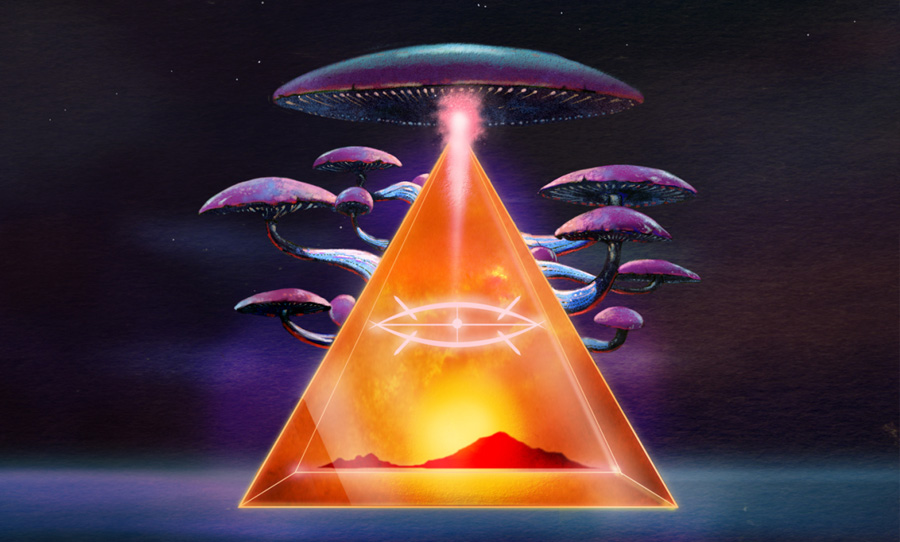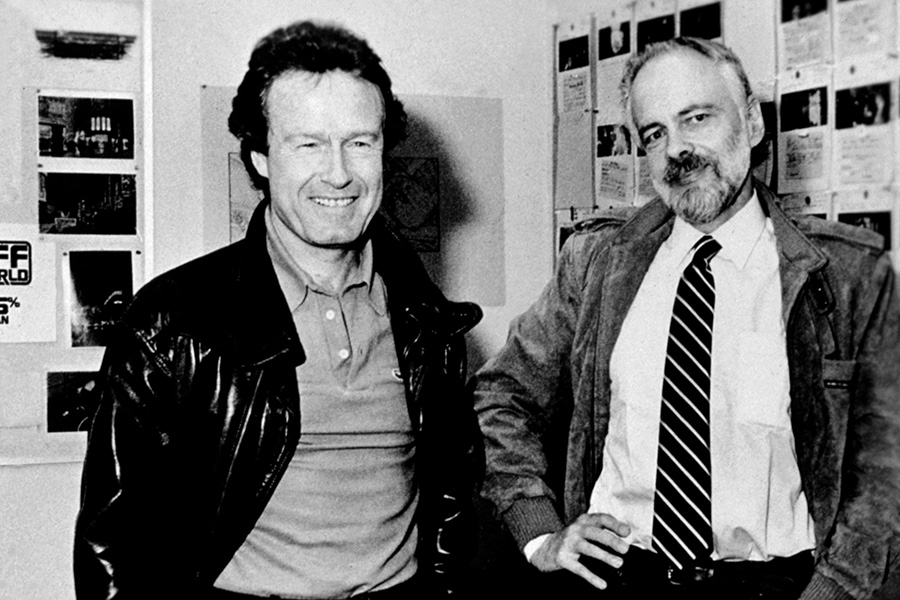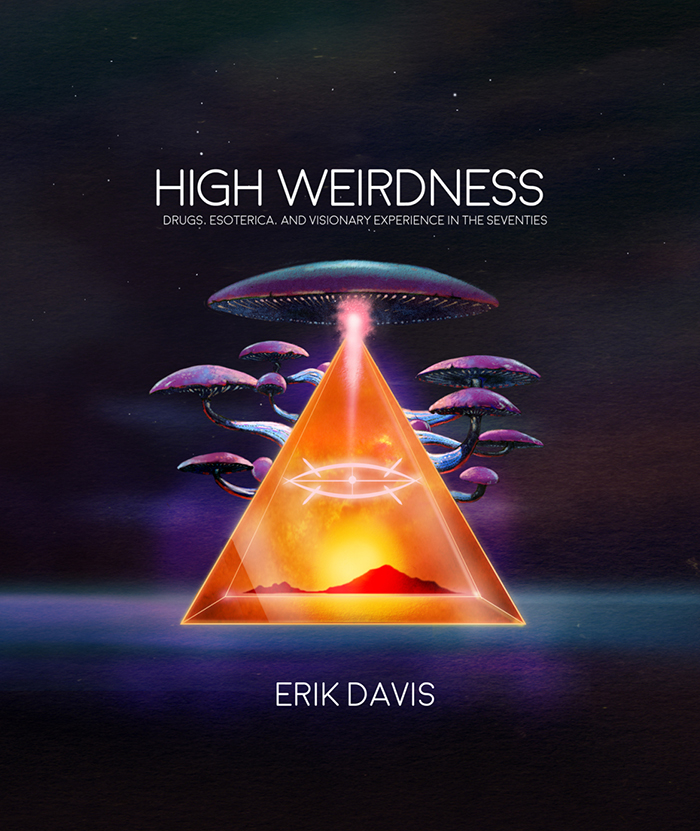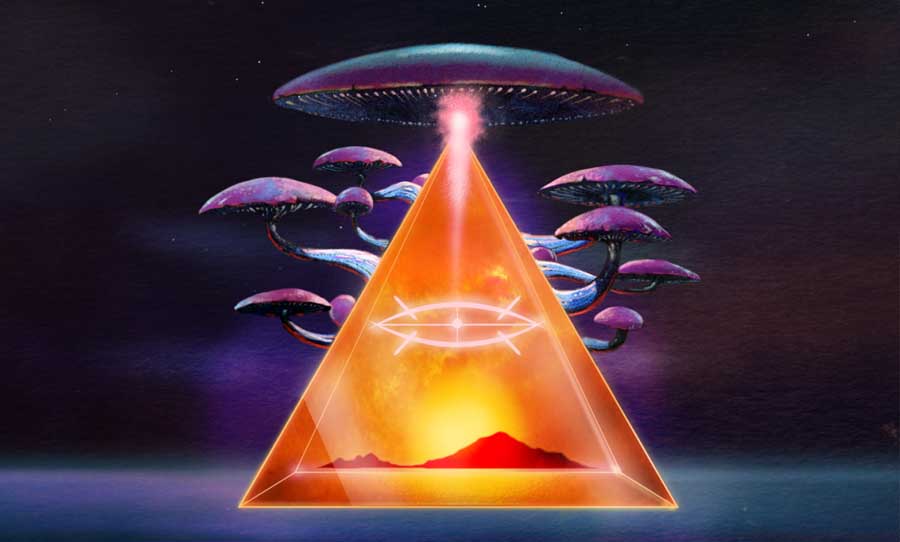“The Beyond, whatever it consists of, might not be nearly as far away or inaccessible as we think.” – Michael Pollan
Compare Erik Davis to rock critic Greil Marcus. Like Davis’ High Weirdness, Marcus’ own 1989 book Lipstick Traces: A Secret History of the 20th Century surveys things previously unconnected but meaningful when brought together. Like Greil, Davis writes as though distinctions between high and low culture – popular (or unpopular) culture and fine art – are meaningless.
Discarding such pretension, both writers seek synchronicities and search for uncanny resonances between cultural figures, theories, identities, and events.

High Weirdness by Erik Davis marks a story of freaks, heads, freaks and seekers who fundamentally lost their minds between 1970 and 1975.
In Lipstick Traces Marcus looks at the rebellious upsurge of punk, Dadaism, and the Paris Commune. He establishes that while these avant-garde countercultural moments are separated by time and circumstance, they are striking in their similarities. Davis embarks on a similar kind of free-associating adventure delving into his own corner of subterranean culture. His beat? ‘The weird’; experiences which do not belong. Erik builds this world from hallucinations, alien abductions, apparitions and oracular dreams. Extraordinary experiences, weird shit.
Lipstick Traces skips centuries and continents, High Weirdness is more focused. Davis’ thoughts circle around his unifying idea of ‘High Weirdness’, a term he uses to denote a mode of culture and consciousness which convalesced in California in the early ‘70s when the bright and radical ideas of the ‘60s counterculture began seeping into the mainstream.
Key to Erik’s work is 2-3-74, a life pivoting religious experience which underpinned much of science fiction writer Philip K. Dick’s later life. The whole affair, at first, seems innocuous enough. A woman with a ‘Jesus Fish’ necklace delivers drugs from the chemist to Dick’s house in early 1974. In the course of Dick collecting his goods, sunlight reflects off of her necklace and into his eyes. However, he saw it differently.

Over many years and many accounts, Dick wrestled with just what exactly it was that had happened. Something approximating his view, at least as related by Davis, would be that in a single revelatory moment Dick experienced an apocalyptic vision, one which took the rest of his life to come to terms with.
While as Davis notes, the author’s religious leanings, prodigious drug use and fragile mental health were well on their way to unravelling his mind this way sooner or later, the course of Dick’s life and his writing were dramatically transformed. (Dick would also later document similar experiences after purchasing a Jesus Fish sticker which projected similar beams of information. This occurred again at least twice, once while he was listening to The Beatles’ Strawberry Fields).
Dick believed 2-3-74 to be his Exegesis, a moment of immense importance but also one he struggled to articulate at a base level. Dick was single-minded in his conviction that the event was significant but as Davis notes, in the eyes of some critics it signalled quite unequivocally that he had gone insane. And indeed, the writer’s lucidity is something which slowly flittered away forevermore until he died from a stroke in 1982.
Dick’s Exegesis though, is but a grand finale. Phil’s story is accompanied by two other cult intellectuals who, as Erik would put it, “formed in the weird conditions of countercultural California.” One is the ketamine quaffing Robert Anton Wilson, a bored Playboy editor who co-authored the culture jamming Illuminatus! trilogy from a hodgepodge of fiction, history, satire, and urban myth. (Note though that it’s Wilson’s 1977 work Cosmic Trigger which captures the bulk of Davis’ attention. It’s a book where, amongst other things, Wilson vents his longstanding conviction that extra-terrestrials from Sirius were providing him information via a “reality tunnel”.)
Accompanying Wilson and Dick is Terence McKenna. His sibling Dennis McKenna – known for his ground-breaking innovations in the home production of psychedelic fungi – is also present. High Weirdness shines a light on the two brothers’ self-appointed mission deep into the Amazonian jungle where the both ingested the prodigious array of hallucinogens which would inform much of their later thoughts on botany, physics, magic, anthropology, and alien possession.
In essence, each of these writers believed that they had communed with an outside force, at which point they did what they do best – they wrote about it. And in doing so they reconstructed and drew meaning from what it is they believed had happened, often over the course of several books and numerous letters of correspondence.
For those looking for writing that will sell them on the ideas, theories, paranormal experiences or any of other grand conspiracies these authors preached, High Weirdness is no such tome. Davis is adept at challenging inner scepticism, but it is not his intention to dissolve it. At least not immediately. So if High Weirdness can’t prove these strange events had any grounding in the real, is it worth the ride? The short answer is yes.
Davis’ account is littered with many brilliant asides, he segues quite marvellously into a range of topics including but not limited to the history of sensory deprivation tanks, mycology, MKU1tra, sex magic, hypnagogic happenings, modern witchcraft, Hunter S. Thompson and human-dolphin relations. There’s a mosaic of literary references bound to swell those who pick up High Weirdness’ reading list.
But despite Davis’ momentum, there are moments when his journey flags. In spite of the charm of the author’s chatty writing style and the academic rigour with which he subjects Dick, the McKennas and Wilson to, the works Davis casts light upon are at times challenging. Digging into them, especially something as dense as The Exegesis of Philip K. Dick can be taxing for any mind which bucks against any explicit inclination to “trust in the mystery”. Many of these scenarios all but cry out to believed. What if they were true!? But questions can be raised as to whether they were ever anything more than rhetorically appealing and stylishly delivered dross and psychobabble of people who led colourful yet somewhat tragic lives.

When Davis does eventually travel into the “loopy labyrinths” of Dick’s voluminous Exegesis it can feel like he indulges in the all too seductive challenge of fishing through gibberish for a cosmic truth. And when it comes to Terence McKenna’s wild theorising, particularly his most disreputable of all, the Timewave, more than a few questions marks are thrown up as to the utility of this shady math. Even Davis, for all the romance of his outlook on the weird, can do little to lend any kind of serious gravitas to the Timewave’s greatest of contentions that the world was ending in 2012 (that said the cultural impact is fascinating).
But to stray into moments where the legitimacy of each of these author’s claims is judged is to forget what High Weirdness is about. Davis isn’t looking to hack your common sense. Instead, he’s asking the reader to question the rigid hierarchies of their perceived realties. Davis’ juxtaposition of these authors forces an examination of what the reader truly feels. Where do they draw the line between what is legitimate and what is real? What is knowable and what is known? These authors’ greatest contributions are not solid or grounded scientific theories or philosophies, but an attitude. They kicked against the borders of their understanding of the world and sometimes, something came loose (even if it was simply their own heads).
Erik is no reality sceptic. He doesn’t proffer that there is no settled meaning to anything, just that meaning can sometimes be less securely fastened than thought. He taps into a deep-seated fascination with things that do not fit into perceived realities but he’s no crank, a relief in an age of algorithm-surfing snake oil conspiracists. Like his reader, Davis himself struggles with where to draw the line. He hasn’t “seen the light”. He’s down here with the rest of us trying to figure it out.
Be it hours or be it days, the temple of high weirdness is architecture you can walk about. Whether or not you will stay and ultimately buy into its tenants remains within your own judgment. It’s a leap of faith and Erik does not always succeed in making a credible case that the non-believer should wholeheartedly embrace the unknown (as romantic of a proposition as that might be).
It’s fun. But is it fruitful? Holding a microscope up to these stories, ones which such scrutiny is not typically reserved for, is fascinating. It can be approached as entertainment but by its very nature as a post-doctoral study and book, High Weirdness invites questioning as to whether there are any loftier notions of utility to be drawn Davis’ observations. Which turns thought back to its mission; striving to amplify the marginal into something treated with the same rigour and scrutiny as ‘the significant’. And in this sense this work is high minded, inspiring and thought provoking.
But is it all a ruse? Some manner of cosmic prank? Only at the end does Davis let his motivation slip. Just shy of the closing pages of High Weirdness he divulges his truest and most overriding of intentions, which is to act as a mental contagion. In his own words Davis likens himself to being like bubble-gum sticking to your shoe. He’s an agitator. The kind that, at stopping short of effecting some profound shift in perspective, will take solace in winding the reader up and then setting them loose just to see what happens.
High Weirdness may never truly transport you to a different reality, but what it does do is probe those spaces where the seeming veils of this one are at their thinnest. Hopefully, this book will do more and catalyse the reader to cast off the fringes of the familiar and examine how they define the knowable. It isn’t as much about solving mysteries as questioning how we define them. The author’s purpose is not to uncover some underlying causes, but point readers to the fact that the structure of our lives may not be as firm as we initially supposed. There are things that lay beyond the limits of the known so there is a good case for, as the author himself would put it, “keeping the door to the outside cracked.”
Davis’ framing of conciseness culture and the High Weirdness which came out of the radical politics and loosened spirituality of the 1960s is probably the most substantive scholarship this topic has on offer. And this is not inconsiderable. Davis has brought together some intriguing threads which no doubt will unravel a few of yours.
And for those not content that High Weirdness leaves many Davis’ looser threads hanging, circle back to Greil Marcus who joined us at the beginning of this conversation. “Real mysteries cannot be solved,” Greil writes at the beginning of Lipstick Traces. “But they can be turned into better mysteries.”
High Weirdness is out now via The MIT Press.


